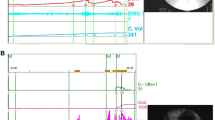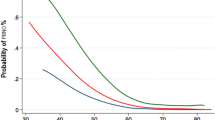Abstract
Vesicoureteral reflux (VUR) is a significant risk factor for clinical pyelonephritis and renal scarring. In 2010, the American Urological Association (AUA) reported that bladder and bowel dysfunction (BBD), which is common in patients with VUR, increases the risk of breakthrough UTI in children receiving antibiotic prophylaxis, reduces the success rate for endoscopic injection therapy, and increases the risk of postoperative UTI, irrespective of the surgical success rate for VUR. Accordingly, physicians are strongly recommended to investigate BBD in their patients with VUR. Symptoms and signs of BBD include urinary frequency and urgency, prolonged voiding intervals, daytime wetting, perineal and penile pain, holding manoeuvres (posturing to prevent wetting), constipation, and encopresis. Primary assessment tools include the Pediatric Symptom Checklist, urinalysis, urine culture, bladder diary, measurement of the postvoid residual urine volume, Dysfunctional Voiding Symptom Score, uroflow with electromyography, and Bristol Stool Form Score. The Rome III criteria can also be used for diagnostic assessment of bowel function. Treatment of BBD should be individualized, directed at symptomatic and objective improvement, and can include behavioural modification, biofeedback, selective use of anticholinergics and α-blockers, and bowel management.
Key Points
-
Vesicoureteral reflux (VUR) is a significant risk factor for clinical pyelonephritis and renal scarring
-
Children with VUR should undergo assessment for bladder and bowel dysfunction (BBD), which can place patients at increased risk of UTI
-
BBD reduces the likelihood of spontaneous resolution of VUR and the success rate of endoscopic injection therapy for VUR
-
BBD increases the risk of UTI in children undergoing surgical therapy for VUR, irrespective of surgical success
-
Assessment and treatment of BBD is imperative in the medical and surgical management of children with VUR
This is a preview of subscription content, access via your institution
Access options
Subscribe to this journal
Receive 12 print issues and online access
$209.00 per year
only $17.42 per issue
Buy this article
- Purchase on Springer Link
- Instant access to full article PDF
Prices may be subject to local taxes which are calculated during checkout





Similar content being viewed by others
References
Elder, J. S. et al. Pediatric Vesicoureteral Reflux Guidelines Panel summary report on the management of primary vesicoureteral reflux in children. J. Urol. 157, 1846–1851 (1997).
Spencer, J. D., Schwaderer, A., McHugh, K. & Hains, D. S. Pediatric urinary tract infections: an analysis of hospitalizations, charges, and costs in the USA. Pediatr. Nephrol. 25, 2469–2475 (2010).
Litwin M. S. & Saigal, C. S. (eds) Urologic Diseases in America 445–461 (National Institutes of Health, US Government Printing, 2012).
Peters, C. A. et al. Summary of the AUA guideline on management of primary vesicoureteral reflux in children. J. Urol. 184, 1134–1144 (2010).
Skoog, S. et al. Pediatric vesicoureteral reflux guidelines summary report: clinical practice guidelines for screening siblings of children with vesicoureteral reflux and neonates/infants with prenatal hydronephrosis. J. Urol. 184, 1145–1151 (2010).
Tekgül, S. et al. EAU Guidelines on vesicoureteral reflux in children. Eur. Urol. 62, 534–542 (2012).
Nevéus, T. et al. The standardization of terminology of lower urinary tract function in children and adolescents: report from the Standardization Committee of the International Children's Continence Society. J. Urol. 176, 314–324 (2006).
Penna, F. J. & Elder, J. S. CKD and bladder problems in children. Adv. Chronic Kidney Dis. 18, 362–369 (2011).
Fumo, M. J. & McLorie, G. A. Management of the valve-bladder syndrome and congenital bladder obstruction: the role of nocturnal bladder drainage. Nat. Clin. Pract. Urol. 3, 323–326 (2006).
Koff, S. A., Lapides, J. & Piazza, D. H. Association of urinary tract infection and reflux with uninhibited bladder contractions and voluntary sphincteric obstruction. J. Urol. 122, 373–376 (1979).
Koff, S. A. & Murtagh, D. S. The uninhibited bladder in children: effect of treatment on recurrence of urinary infection and on vesicoureteral reflux in children. J. Urol. 130, 1138–1141 (1983).
Noe, H. N. The role of dysfunctional voiding in failure of complication of ureteral reimplantation for primary reflux. J. Urol. 134, 1172–1175 (1985).
Snodgrass, W. Relationship of voiding dysfunction to urinary tract infection and vesicoureteral reflux in children. Urology 38, 341–344 (1991).
Koff, S. A., Wagner, T. T. & Jayanthi, V. R. The relationship among dysfunctional elimination syndromes, primary vesicoureteral reflux, and urinary tract infections in children. J. Urol. 160, 1019–1022 (1998).
Snodgrass, W. The impact of treated dysfunctional voiding on the nonsurgical management of vesicoureteral reflux. J. Urol. 160, 1823–1825 (1998).
Chen, J. J., Mao, W., Homayoon, K. & Steinhardt, G. F. A multivariate analysis of dysfunctional elimination syndrome, and its relationship with gender, urinary tract infection and vesicoureteral reflux in children. J. Urol. 171, 1907–1910 (2004).
Sillén, U., Hellström, A. L., Holmdahl, G. & Sölsnes, E. The voiding pattern in infants with dilating reflux. BJU Int. 83, 83–87 (1999).
Sillén, U., Helmström, A. L., Hermanson, G. & Abrahamson, K. Comparison of urodynamic and free voiding pattern in infants with dilating reflux. J. Urol. 161, 1928–1933 (1999).
Jansson, U. B., Hanson, M., Sillén, U. & Hellström, A. L. Voiding pattern and acquisition of bladder control from birth to age 6 years—a longitudinal study. J. Urol. 174, 289–293 (2005).
Bachelard, M., Sillén, U., Hansson, S., Hermanson, G., Jodal, U. & Jacobsson, B. Urodynamic pattern in infants with urinary tract infection. J. Urol. 160, 522–526 (1998).
Sjöström, S., Jodal, U., Sixt, R., Bachelard, M. & Sillén, U. Longitudinal development of renal damage and renal function in infants with high grade vesicoureteral reflux. J. Urol. 181, 2277–2783 (2009).
Demirbag, S. et al. Bladder dysfunction in infants with primary vesicoureteral reflux. J. Int. Med. Res. 37, 1877–1891 (2009).
Brandström, P. et al. The Swedish Reflux Trial in children: I. Study design and study population characteristics. J. Urol. 184, 274–279 (2010).
Sillén, U. et al. The Swedish reflux trial in children: V. Bladder dysfunction. J. Urol. 184, 298–304 (2010).
Hunziker, M., Mohanan, N., D'Asta, F. & Puri, P. Incidence of febrile urinary tract infections in children after successful endoscopic treatment of vesicoureteral reflux: a long-term follow-up. J. Pediatr. 160, 1015–1020 (2012).
Traxel, E., DeFoor, W., Reddy, P., Sheldon, C. & Minevich, E. Risk factors for urinary tract infection after dextranomer/hyaluronic acid endoscopic injection. J. Urol. 182 (Suppl. 4), 1709–1712 (2009).
Dwyer, M. E., Husmann, D. A., Rathbun, S. R., Weight, C. J. & Kramer, S. A. Febrile urinary tract infections after ureteroneocystostomy and subureteral injection of dextranomer/hyaluronic acid for vesicoureteral reflux—do choice of procedure and success matter? J. Urol. 189, 275–282 (2013).
Hinman, F. Jr & Baumann, F. W. Complications of vesicoureteral operations from incoordination of micturition. J. Urol. 116, 638–643 (1976).
Sillén, U., Mamoun, A., Hellström, A. L. & Sölsnes, E. Bladder dysfunction in infants with high-grade reflux: does it persist at school-age after anti-reflux surgery? [abstract E78] BJU Int. 91 (Suppl. 1), s53–s54 (2003).
Farhat, W. et al. The dysfunctional voiding scoring system: quantitative standardization of dysfunctional voiding symptoms in children. J. Urol. 164, 1011–1015 (2000).
Lewis, S. J. & Heaton, K. W. Stool form scale as a useful guide to intestinal transit time. Scand. J. Gastroenterol. 32, 920–924 (1997).
American Urological Association. Management and Screening of Primary Vesicoureteral Reflux in Children: AUA Guideline [online], (2010).
Wolfe-Christensen, C., Veenstra, A. L., Kovacevic, L., Elder, J. S. & Lakshmanan, Y. Psychosocial difficulties in children referred to pediatric urology: a closer look. Urology 80, 907–912 (2012).
Szabo, L. & Fegyverneki, S. Maximum and average urine flow rates in normal children—the Miskolc nomograms. Br. J. Urol. 76, 16–20 (1995).
Jansson, U. B., Hanson, M., Hanson, E., Hellström, A. L. & Sillén, U. Voiding pattern in healthy children 0 to 3 years old: a longitudinal study. J. Urol. 164, 2050–2054 (2000).
Kutlu, O., Koksal, I. T., Guntekin, E. & Kukul, E. Role of spinning top urethra in dysfunctional voiding. Scand. J. Urol. Nephrol. 44, 32–37 (2010).
Hjälmås, K. Urodynamics in normal infants and children. Scand. J. Urol. Nephrol. Suppl. 114, 20–27 (1988).
Ramamurthy, H. R. & Kanitkar, M. Noninvasive urodynamic assessment in children—are they reliable? Validation of non-invasive urodynamics in children with functional voiding disorders. Indian J. Pediatr. 77, 1400–1404 (2010).
Rome Foundation. Rome III Disorders and Criteria [online], (2013).
Osatakul, S. & Puetpaiboon, A. Use of Rome II vs Rome III Criteria for Diagnosis of Functional Constipation in Young Children. Pediatr. Int. http://dx.doi.org/10.1111/ped.12194.
Rome Foundation. Appendix A. Rome III Diagnostic Criteria for Functional Gastrointestinal Disorders [online], (2006).
Rasquin, A. et al. Childhood functional gastrointestinal disorders: child/adolescent. Gastroenterology 130, 1527–1537 (2006).
Burgers, R. E. et al. Management of functional constipation in children with lower urinary tract symptoms: report from the Standardization Committee of the International Children's Continence Society. J. Urol. 190, 29–36 (2013).
Champeau, A. & Baskin, L. Editorial comment. J. Urol. 190, 36 (2013).
Bush, N. C. et al. Randomized, double-blind, placebo-controlled trial of polyethylene glycol (MiraLAX®) for urinary urge symptoms. J. Pediatr. Urol. 9, 597–604 (2013).
McKenna, P. H., Herndon, C. D., Connery, S. & Ferrer, F. A. Pelvic floor muscle retraining for pediatric voiding dysfunction using interactive computer games. J. Urol. 163, 1056–1063 (1999).
Herndon, C. D., DeCambre, M. & McKenna, P. H. Changing concepts concerning the management of vesicoureteral reflux. J. Urol. 166, 1439–1443 (2001).
Palmer, L. S. et al. Biofeedback therapy expedites the resolution of reflux in older children. J. Urol. 168, 1699–1702 (2002).
Kaye, J. D. & Palmer, L. S. Animated biofeedback yields more rapid results than nonanimated biofeedback in the treatment of dysfunctional voiding in girls. J. Urol. 180, 300–305 (2008).
DeSantis, D. J., Leonard, M. P., Preston, M. A., Barrowman, N. J. & Guerra, L. A. Effectiveness of biofeedback for dysfunctional elimination syndrome in pediatrics: a systematic review. J. Pediatr. Urol. 7, 342–348 (2011).
Fast, A. M., Nees, S. N., Van Batavia, J. P., Combs, A. J. & Glassberg, K. I. Outcomes of targeted treatment for vesicoureteral reflux in children with nonneurogenic lower urinary tract dysfunction. J. Urol. 190, 1028–1033 (2013).
Chi, A., Gupta, A. & Snodgrass, W. Urinary tract infection following successful dextranomer/hyaluronic acid injection for vesicoureteral reflux. J. Urol. 179, 1966–1999 (2008).
Sedberry-Ross, S. et al. Febrile urinary tract infections in children with an early negative voiding cystourethrogram after treatment of vesicoureteral reflux with dextranomer/hyaluronic acid. J. Urol. 180, 1605–1609 (2008).
Whittam, B. M. et al. Febrile urinary tract infection after ureteroneocystostomy: a contemporary assessment at a single institution. J. Urol. 183, 688–693 (2010).
Author information
Authors and Affiliations
Contributions
Both authors researched the data for the article and discussed its content, wrote the manuscript, and edited it before submission.
Corresponding author
Ethics declarations
Competing interests
The authors declare no competing financial interests.
Rights and permissions
About this article
Cite this article
Elder, J., Diaz, M. Vesicoureteral reflux—the role of bladder and bowel dysfunction. Nat Rev Urol 10, 640–648 (2013). https://doi.org/10.1038/nrurol.2013.221
Published:
Issue Date:
DOI: https://doi.org/10.1038/nrurol.2013.221
This article is cited by
-
Bladder Dysfunction After Ureteral Reimplantation
Current Bladder Dysfunction Reports (2022)
-
Delayed elimination communication on the prevalence of children's bladder and bowel dysfunction
Scientific Reports (2021)
-
Bladder-Bowel Dysfunction in Children: Consequences, Risk Factors and Recommendations for Primary Care Interventions
Current Pediatrics Reports (2018)
-
Physiopathology of vesico-ureteral reflux
Italian Journal of Pediatrics (2016)
-
Managing Vesicoureteral Reflux in the Pediatric Patient: a Spectrum of Treatment Options for a Spectrum of Disease
Current Treatment Options in Pediatrics (2016)



